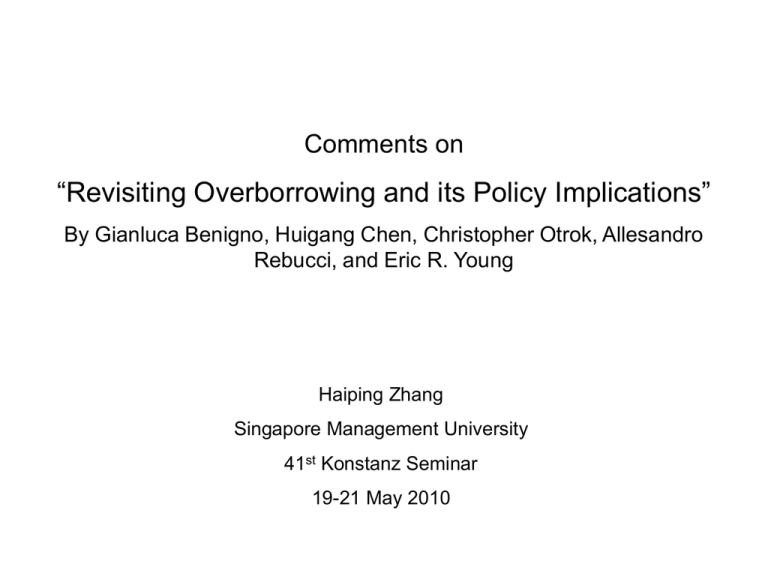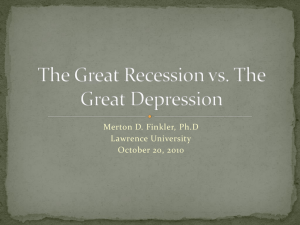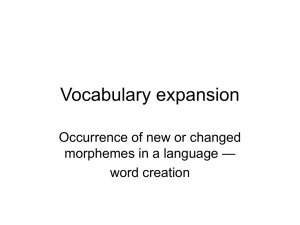Comments - Haiping Zhang`s Homepage
advertisement

Comments on “Revisiting Overborrowing and its Policy Implications” By Gianluca Benigno, Huigang Chen, Christopher Otrok, Allesandro Rebucci, and Eric R. Young Haiping Zhang Singapore Management University 41st Konstanz Seminar 19-21 May 2010 Does an occasionally-binding borrowing constraint in a decentralized market economy with production lead to excessive external borrowing? What are the policy implications? Source: Reinhart and Rogoff (2008) Related Literature • Pecuniary externality and the first theorem of welfare economics • Incomplete and imperfect markets Stiglitz (1982), Geanakoplos and Polemarchakis (1986) • Single good vs. multiple goods Kehoe and Levine (1993) • Pecuniary externality and endogenous borrowing constraints Lorenzoni (2008), Korinek (2009, 2010), Bianchi (2009) Main Features • Occasionally vs. always binding borrowing constraints • DSGE model vs. static model (Korinek, 2009) • Production economy vs. endowment economy (Bianchi, 2009, Korinek, 2010) • Underborrowing and overborrowing Three Key Elements in This Paper • Pecuniary externality • Borrowing constraints with debt dollarization • Endogenous labor supply The Model 1. Tradable goods (numeraire) vs. non-tradable goods Individual consumption basket: 1 κ c t ω (c ) T t κ 1 κ (1 ω) (c ) Pt N Optimal individual consumption pattern: 1 κ 1ωω 1 κ N t N ct T ct 1κ 2. Stochastic endowment in the tradable sector Production in the non-tradable sector 3. Endogenous borrowing constraints (debt dollarization) Foreign borrowing is denominated in units of tradable good, while the collateralized income is generated in the non-tradable sector. b t 1 1 φ φ [π t W t h t ] κ 1 κ κ κ 1 Decentralized Market vs. Social Planner Decentralized market equilibrium Social planner equilibrium Optimization of individual agents Optimization of the social planner • • maximize the utility function maximize the social welfare function subject to subject to 1. Individual budget constraints 1. Aggregate resource constraints 2. Individual borrowing constraints 2. Aggregate borrowing constraints b t 1 1 φ φ [π t W t h t ] B t 1 1 φ φ [e T Y Pt H t ] T N 3. Relative price determination Pt N 1ωω 1 κ N Ct T Ct 1κ Overborrowing or Underborrowing? Pecuniary externality on the collateral value (Bianchi, 2009) Since the social value of collateral is higher than the private one, the social planner tends to save more or borrow less than in the decentralized economy. Endogenous labor supply: (Benigno et. al. 2010) Expecting that borrowing constraints may bind in the future raises the marginal utility of tradable consumption in the social planner equilibrium. It also implies a higher marginal utility of nontradable consumption. As a result, labor supply and non-tradable production are higher than in the decentralized economy. In other words, inefficiently low labor supply may lead to inefficiently high savings in the decentralized economy. Under certain parameter values, the second effect may dominate the first one. Relevance for the Current Crisis After the 1997 Asia crises, emerging economies learned the lesson and accumulated huge foreign reserves to avoid the binding borrowing constraints. Thus, overborrowing was not a big issue for these countries in the past decade.. However, such policies in emerging economies have a pecuniary externality on the world capital market. The resulting low interest rate creates space for asset price bubbles in developed economies. This line of research are indeed of great importance for emerging economies now. Since growth perspectives in US and Europe are still subdued in the near future, capital flows to emerging economies has started since mid-2009. Remarks 1. Promising research framework to address various issues 2. Labor market flexibility 3. Nonlinear relation between financial development and macro volatility Aghion, Bacchetta, and Banerjee (2004) 4. Decompose EIS and CRRA (Epstein-Zin Preference) 5. Binding borrowing constraints vs. endogenous default Arellano (2008), Kim and Zhang (2010)











